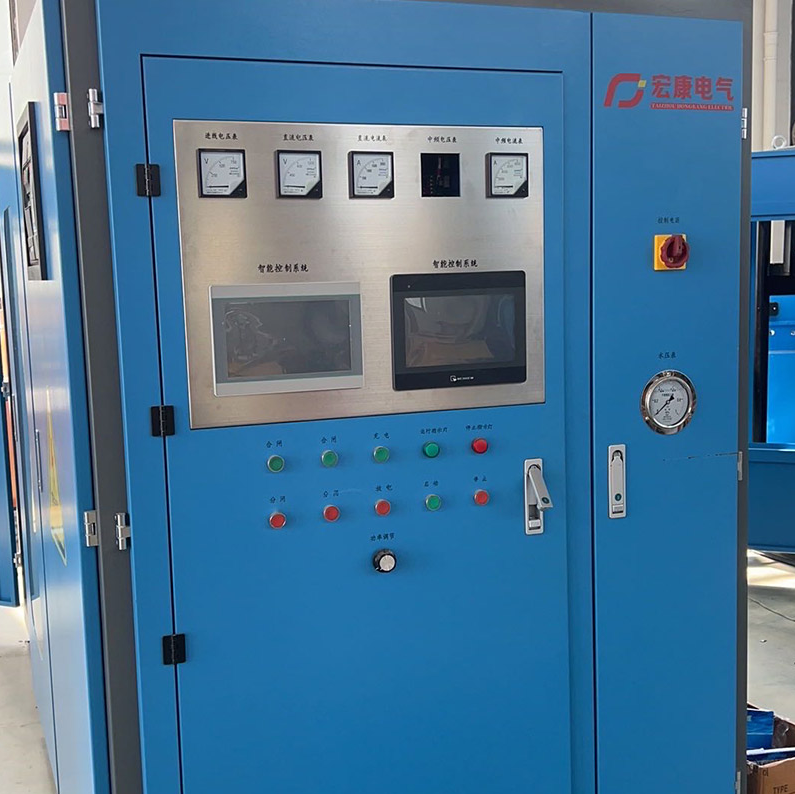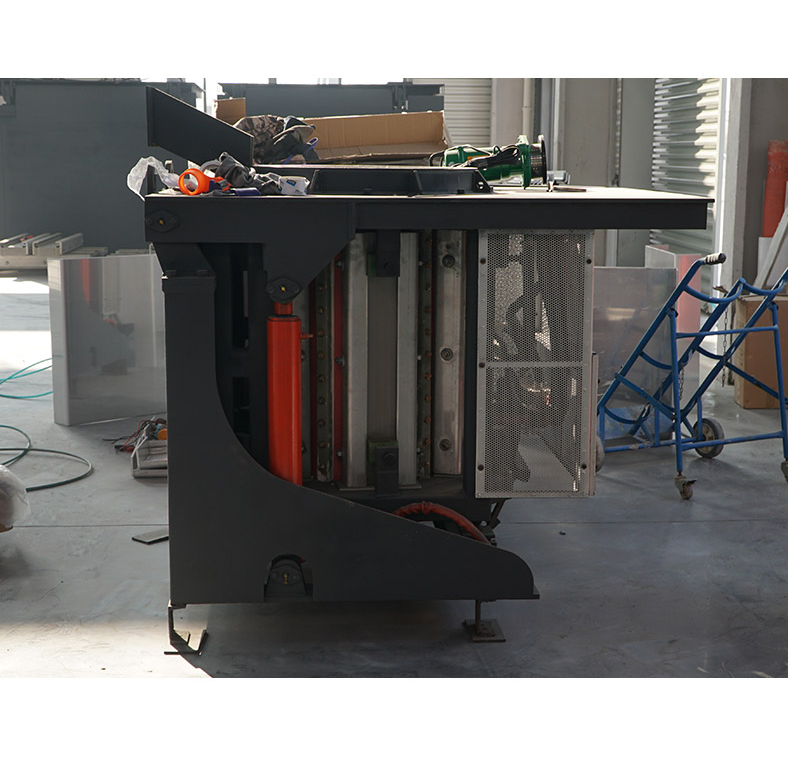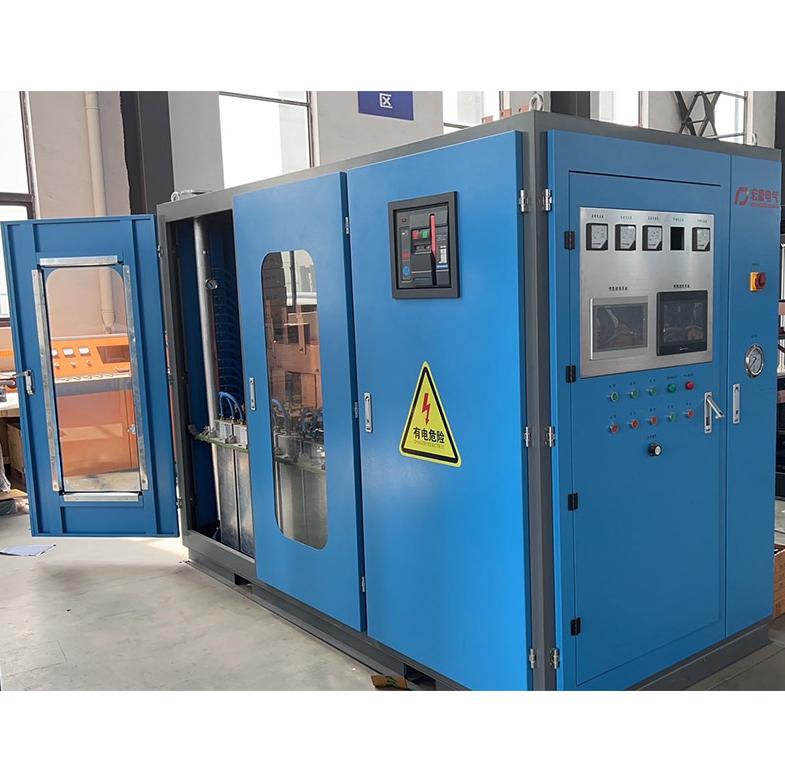From Bronze to Steel: Versatility of Induction Melting Furnace
Have you ever pondered how industries manage to melt a diverse array of metals, ranging from common iron and steel to precious materials like gold and platinum, with such precision and efficiency? The secret lies in the sophisticated technology embedded within induction melting furnaces. Whether one is stepping into the realm of metalworking for the first time or has extensive experience in the field, a comprehensive understanding of the versatility and myriad benefits offered by induction melting furnaces can profoundly expand one’s grasp of these indispensable tools and their practical applications.
What Exactly is an Induction Melting Furnace?
Induction melting furnaces operate on the principle of utilizing electromagnetic fields to generate heat and melt metals—achieved without necessitating direct physical contact. This unique method facilitates precise control over temperature, rapid heating capabilities, and enhanced energy efficiency, positioning induction furnaces as a favored choice for a multitude of industrial applications. When compared to traditional furnaces, which typically rely on fuel combustion, induction furnaces present a markedly cleaner, safer, and more efficient alternative, revolutionizing metal melting processes across various sectors.
The Medium Frequency Induction Melting Furnace: A Game Changer in Metalworking Technology
Among the diverse types of induction furnaces available, the Medium Frequency Induction Melting Furnace distinguishes itself due to its exceptional performance characteristics and unparalleled flexibility. Designed and developed by Taizhou Hongkang Electric Co., Ltd., this furnace harnesses medium-frequency induction heating technology to establish optimal melting conditions for a wide spectrum of metals and alloys. Its remarkable capability to accommodate a broad range of melting requirements—from standard metals like iron and steel to precious metals such as gold and silver—renders it an invaluable asset in modern metalworking facilities, large and small alike.
Owing to its innovative design, the Medium Frequency Induction Melting Furnace ensures rapid and uniform heating, minimizes energy consumption, and allows precise control over melting temperatures. These attributes make it ideal for applications in industries as varied as foundries, metal casting facilities, jewelry making, automotive manufacturing, and beyond, thereby establishing its reputation as a versatile and essential tool for contemporary metalworking needs.
Recent Innovations in Induction Melting Furnaces: What’s on the Horizon?
The advent of new technologies and progressive enhancements in the design and functionality of induction melting furnaces have fundamentally transformed the methodologies employed for metal melting. With the integration of digital control systems, optimized power management strategies, and configurations that align with environmentally sustainable practices, these furnaces have attained levels of reliability and efficiency that were previously unimaginable.
Cutting-Edge Control Systems and Advanced Automation
State-of-the-art induction melting furnaces, including the Medium Frequency Induction Melting Furnace produced by HK Frequency Furnace, now come equipped with advanced control systems that facilitate automated temperature adjustments, real-time performance monitoring, and even remote control capabilities. These improvements not only guarantee consistent and stable melting conditions but also significantly diminish the likelihood of human error, ultimately leading to a higher standard of product quality and uniformity.
Enhanced Energy Efficiency: The New Benchmark
One of the standout innovations within the realm of induction melting technology is the significant improvement in energy efficiency. By meticulously optimizing the frequency and power output, modern medium-frequency induction furnaces are capable of minimizing heat loss while maximizing energy utilization. Consequently, this reduces the overall melting time and operational costs, establishing these furnaces as a more economical choice for large-scale industrial operations.
Environmental Sustainability: A Cleaner Approach
Induction melting furnaces have long been recognized for their clean operational mode, primarily because they do not depend on fuel combustion, which typically releases harmful gases into the environment. Recent advancements have further elevated the environmental performance of these furnaces by incorporating features that effectively reduce noise pollution and improve waste management protocols throughout the melting process. Such innovations are in perfect harmony with the increasing emphasis on sustainable practices within industrial domains.
Best Practices for Safe Operation of Induction Melting Furnaces
Although induction melting furnaces are inherently safer compared to their traditional counterparts, owing to the absence of fuel combustion and open flames, strict adherence to safety protocols remains imperative to safeguard operators and ensure the proper functioning of the equipment.
Routine Inspection and Comprehensive Maintenance
Routine inspections and maintenance procedures are critical to preempting malfunctions and maintaining safe operations. Operators should vigilantly check for signs of wear and tear on critical components such as the induction coil, water-cooling systems, and electrical circuits. Additionally, keeping the workspace clean and organized is essential to mitigate risks associated with equipment malfunction or the accumulation of debris.
Proper Training and Meticulous Handling
Operators must receive thorough training in the proper handling of induction melting furnaces, with a focus on understanding the equipment’s functionality and becoming adept at emergency procedures. Effective communication and strict adherence to operating protocols are key to preventing accidents and ensuring smooth, uninterrupted operations.
Implementation of Personal Protective Equipment (PPE)
While induction furnaces eliminate many hazards associated with traditional fuel combustion, risks related to high temperatures and electromagnetic fields still persist. Therefore, operators must always wear appropriate personal protective equipment (PPE), such as heat-resistant gloves, face shields, and protective clothing, to minimize the likelihood of injury.
Maintenance and Troubleshooting: Key to Prolonging Furnace Lifespan
To extend the lifespan of an induction melting furnace and ensure consistent performance, regular maintenance and troubleshooting are of paramount importance. Early detection and resolution of potential issues can prevent costly repairs and avoid interruptions to operational continuity.
Periodic Cleaning and Component Inspections
Regular cleaning of both internal and external components of the furnace is necessary to prevent the accumulation of dirt and debris, which can impede the melting process. Inspections should focus on identifying signs of damage or wear in key components like the induction coil, power supply, and cooling systems.
Monitoring and Accurate Calibration
Periodic monitoring of the furnace’s temperature control systems, coupled with accurate calibration, ensures that melting conditions remain within the desired parameters. This helps prevent overheating or underheating, which can adversely affect the quality of the melted metal.
The Indispensable Role of Induction Melting Furnaces in High-Precision Metal Casting
Induction melting furnaces have become a cornerstone in the realm of high-precision metal casting, where precise control over temperature and melting conditions is imperative for producing castings of superior quality with minimal defects. Their versatility facilitates the melting of a variety of metals and alloys, including iron, steel, copper, and aluminum, making them well-suited for a broad range of casting applications.
Achieving Uniform Heating and Melting
Uniform heating and melting, as ensured by induction melting furnaces, are critical in avoiding the formation of defects such as porosity or segregation in castings. Moreover, the rapid heating capabilities of medium frequency furnaces contribute to reduced melting times, thereby boosting productivity and operational efficiency.
Conclusion: The Expanding Role of Induction Melting Furnace
As the demand for more efficient, precise, and environmentally friendly melting solutions continues to grow, the role of induction melting furnace from Taizhou Hongkang Electric Co., Ltd. is poised to expand even further. With the ongoing advancements in technology and a steadfast commitment to safety and efficiency, these furnaces are well-positioned to remain a vital part of the metalworking industry for years to come.



